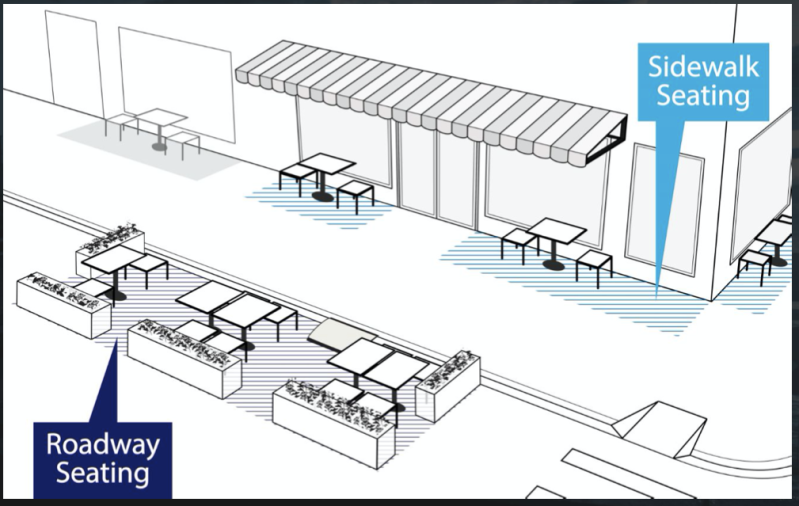Mayor Reveals ‘Open Restaurants’ Plan — And Industry is Pleased

Do you want to hear tonight’s specials?
A bubbly Mayor de Blasio announced a major, and streamlined, open streets for restaurants plan that, he says, will save 5,000 eateries and their 45,000 employees.
After delaying a decision for days, the mayor said his plan will go into affect on Monday, at least a full week earlier than he originally had predicted.
“Get on your mark, get ready, get set for Monday,” he told reporters today. “We have to save this industry. It’s part of our identity,” he added, boasting, without hard evidence, that New York’s restaurant scene is better than Paris, Bangkok or Tokyo. “We are the greatest restaurant city in the world.”
The plan does indeed seem straightforward: starting on Friday and continuing through Labor Day, restaurateurs need only go to this new Department of Transportation web pageweb page in order to be able to self-certify their participation in the plan. Those restaurants will be able to use sidewalk space (even if they have not in the past) and roadway space along the curb, which many people believe exist only for the storage of automobiles, but is actually public space. The plan will re-purpose “thousands” of parking spaces, said Transportation Commissioner Polly Trottenberg.
“As you know, we have taken quite a bit of parking and re-purposed it for bus lanes, bike lanes, Citi Bike, so this is part of a development that has already been happening in the city,” she said. “This is a great trade-off to help our restaurants. And obviously if this is a model that prove successful we will see how much of it might endure after Labor Day.
“We are thrilled to offer our streets,” she added.
After the Monday opening, the mayor said that his existing open streets plan, which comprises about 35 miles of roadways, though few in commercial areas, would get involved, though he offered no specifics. He also said that public plazas, many managed by business improvement districts, could reach out to DOT to make those spaces available for dining.

But the mayor emphasize repeatedly that he wants this plan to be “simple and easy” so that there is not an undue burden on the restaurant industry.
As such, Andrew Rigie of the NYC Hospitality Alliance, was ebullient.
“This plan is so critical in getting the support to businesses so they can stand a fighting chance of coming back, rebuilding our industry and creating the city that we remember,” he said, praising the “streamlined process.”
De Blasio said he saw the repurposing of “parking” as crucial to the city survival going forward.
“The future of this city is not the automobile, it is mass transit,” he said. “And we will look at any, and all, options going forward.”
As an aside, the mayor asked Streetsblog if its reporter knew how many parking spaces there are in the city. Of course, the reporter knew: roughly 3,000,000 — which means, of course, that the mayor’s plan, while well-received, is really only offering a battered industry a tiny portion of public space that is currently poorly used.
This is a breaking story and will be updated later.





